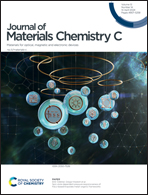Nanomaterial-based probes for iodide sensing: synthesis strategies, applications, challenges, and solutions
Abstract
Nanomaterial-based sensors have emerged as promising candidates for iodide ion sensing owing to their unique properties, such as high surface area, tunable surface chemistry, and excellent electrical/optical characteristics. Iodide ions (I−) hold great significance in biological, food, and environmental fields. Therefore, developing novel chemosensors with enhanced sensitivity, selectivity, reliability, and reusability to detect iodide ions is crucial. This review article discusses the fundamental fluorometric mechanisms of nanomaterials for iodide ion sensing, including (i) photo-induced electron transfer, (ii) internal charge transfer, (iii) metal–ligand charge transfer, (iv) fluorescence resonance energy transfer, (v) excited-state intramolecular proton transfer, (vi) upconversion fluorescence, (vii) excimer, and (viii) colorimetric sensing mechanisms. Moreover, various metal-based nanoparticles (Au, Ag, Pd, and Cu), bimetallic nanoparticles (Pd–Pt, Fe–Co, and Cu–Ni), metal sulfide-based nanoparticles (CdS, ZnS, and CuS), and quantum dots (CdSe, C-dots, and graphene dots) explored for iodide ion sensing during 2013–2023 are discussed. Finally, various potential applications, associated challenges, and possible solutions for detecting iodide ions using nanoparticles are also presented in detail.

- This article is part of the themed collection: Journal of Materials Chemistry C Recent Review Articles


 Please wait while we load your content...
Please wait while we load your content...